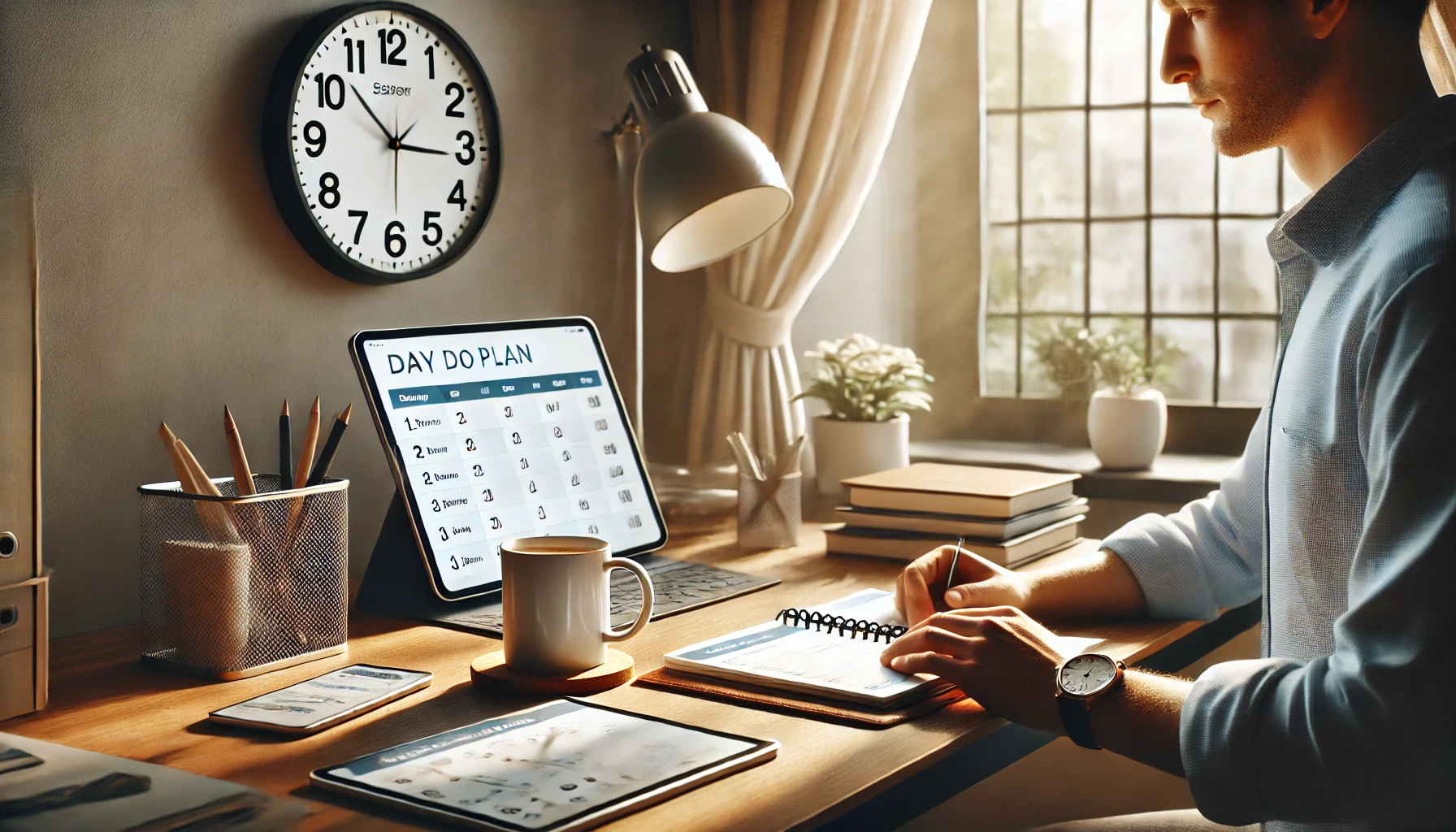Planning your day can be the difference between feeling productive and feeling overwhelmed. A structured approach helps you stay focused, reduce stress, and get more done without burning out. If you’ve ever ended the day wondering where the time went, this guide will help you take back control.
Why Daily Planning Matters
A good plan doesn’t just help you get more done—it helps you get the right things done. When you know what to focus on, you waste less time on distractions and avoid the mental fatigue that comes with constant decision-making.
Key Benefits:
- Clear priorities
- Better time management
- Reduced anxiety
- More time for rest and creativity
Step 1: Start with a Morning Mindset Check
Before you dive into tasks, check in with yourself. How are you feeling? What kind of day do you want to have?
Taking 2–5 minutes for reflection or journaling can clear your mind and help you start with intention.
Example Prompts:
- “What’s one thing I want to accomplish today?”
- “What’s something I can do to stay calm and focused?”
- “What kind of energy do I want to bring into the day?”
Step 2: Brain Dump All Your Tasks
Grab a notebook or digital planner and write down everything on your mind—work tasks, personal errands, ideas, reminders. Don’t filter anything yet.
This “brain dump” helps declutter your mind and gives you a full picture of what needs your attention.
Step 3: Prioritize with the 3–3–3 Method
Trying to do 20 things in one day only leads to frustration. Instead, focus on what truly matters using the 3–3–3 rule:
- 3 high-priority tasks
- 3 medium tasks (nice to do)
- 3 low-effort tasks (quick wins)
This structure keeps you realistic while giving you a sense of progress throughout the day.
Bonus Tip:
Do your high-priority tasks during your peak energy hours (usually mid-morning for most people).
Step 4: Time Block Your Calendar
Time blocking is one of the most powerful planning tools. It involves assigning specific time slots for each task or activity.
How to Do It:
- Block out fixed activities first (meetings, appointments, meals)
- Fill in your top 3 priorities into open slots
- Leave buffer times between tasks to avoid stress
- Add breaks to recharge
You can use Google Calendar, a physical planner, or apps like Notion or Sunsama.
Step 5: Include Breaks and Flex Time
Planning every minute of your day sounds productive—but it can backfire. Things rarely go exactly as planned, so build in time for the unexpected.
Why It Works:
Including flexible time prevents your day from spiraling when a task takes longer or an interruption occurs. It also allows space to breathe and reset.
Step 6: Plan the Night Before
Ending your day with a simple 5-minute planning session makes your mornings calmer and more focused.
Evening Planning Routine:
- Review what you accomplished
- Note anything you didn’t finish
- Choose top 3 priorities for the next day
- Set your intention
By the time you wake up, you already know your game plan.
Step 7: Use a Planning Tool That Works for You
There’s no one-size-fits-all solution. The best planner is the one you actually use.
Popular Options:
- Paper Planners – Great for tactile thinkers
- Digital Planners (Notion, Trello, Google Calendar) – Ideal for tech-savvy users
- Hybrid Systems – Combine digital for scheduling and paper for focus
Try different formats until you find what sticks.
Step 8: Reflect at the End of the Day
Productivity isn’t just about doing more—it’s about learning from what you did.
Ask Yourself:
- What went well today?
- What distracted me?
- What would I do differently tomorrow?
Reflection helps you continuously refine your planning style and habits.
